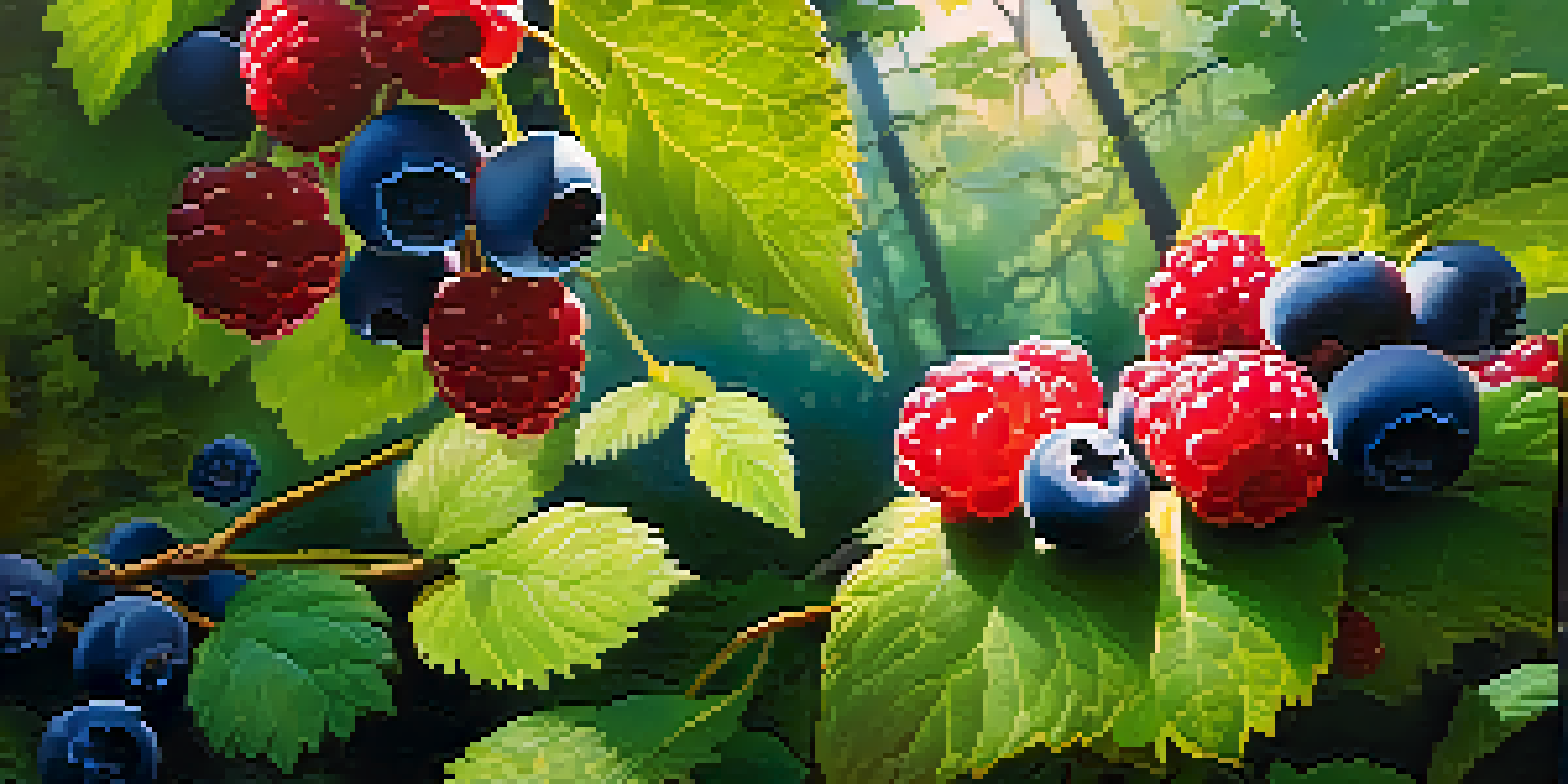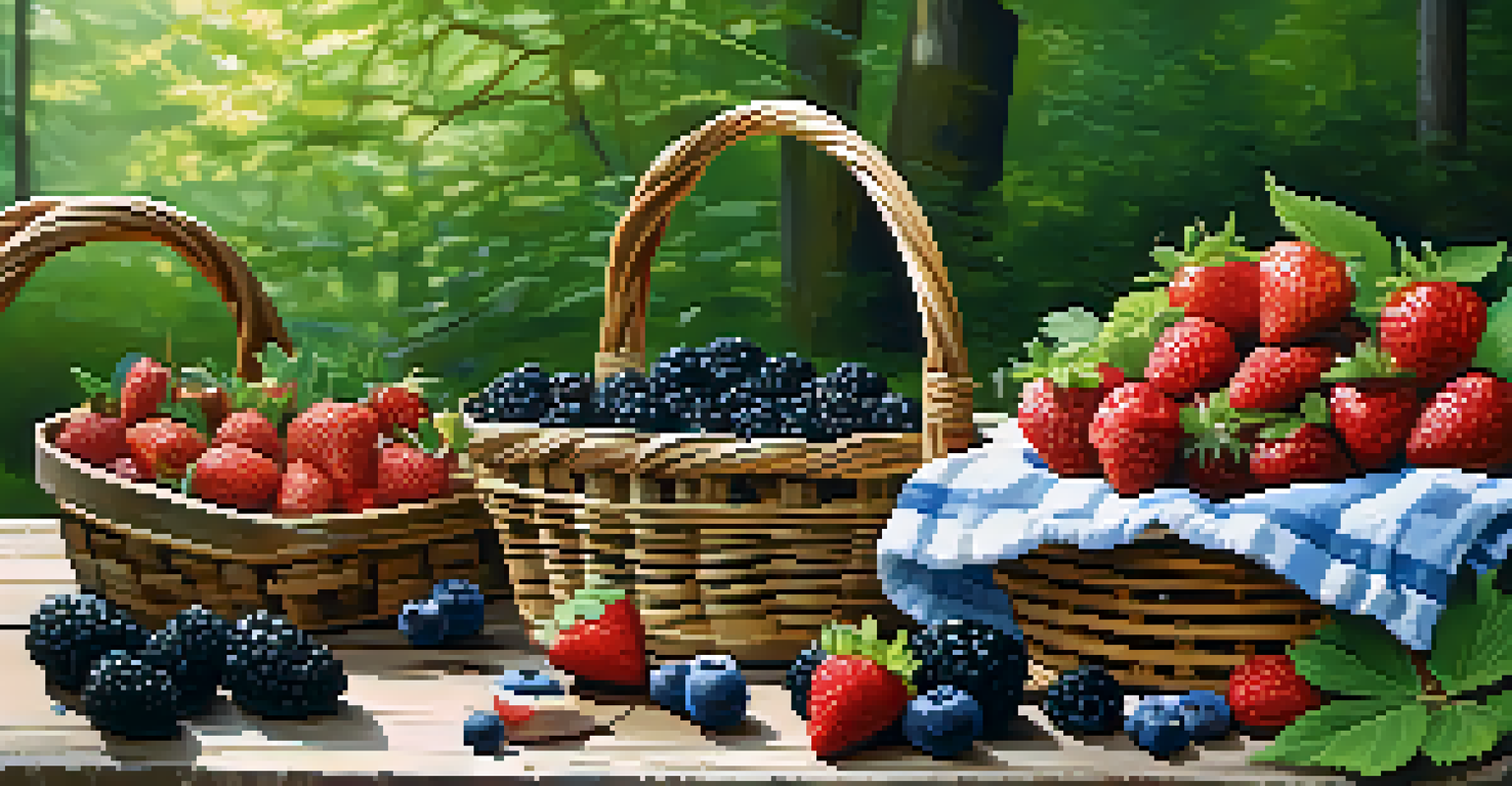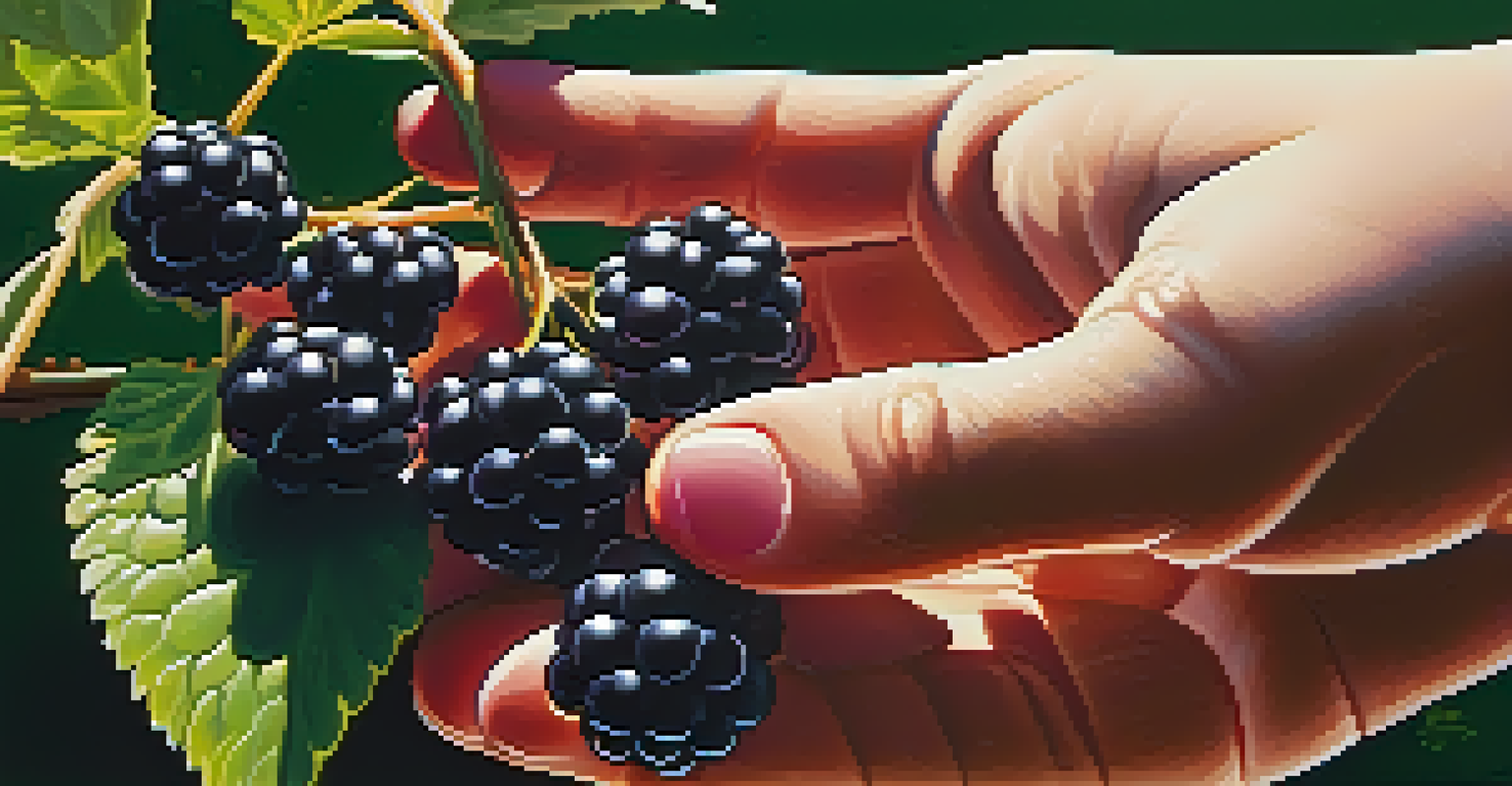Foraging for Wild Berries: Tips for a Sweet Harvest

Understanding Wild Berries: A Quick Introduction
Foraging for wild berries can be a delightful adventure, but it's essential to know what you're looking for. Wild berries come in various shapes, sizes, and colors, each with its unique flavor and nutritional benefits. Popular varieties include blackberries, blueberries, raspberries, and strawberries, all of which can be found in different regions.
Nature provides a free lunch, but only if we control our appetites.
Before you start, familiarize yourself with the berries native to your area. This not only enhances your foraging experience but also helps you avoid potentially harmful plants. Resources like local foraging guides or apps can be invaluable in distinguishing edible berries from poisonous ones.
Remember, not all berries are created equal. Some may look similar but can be vastly different in taste or toxicity. By understanding the characteristics of wild berries, you'll be better prepared for a safe and enjoyable harvest.
Essential Gear for a Successful Foraging Trip
Equipping yourself with the right gear can make your foraging experience much more enjoyable. A sturdy basket or bag is essential for collecting your berries; it allows for proper airflow, preventing squishing during transport. Additionally, consider bringing a small knife or scissors for cutting stems and a field guide for identification.

Comfortable clothing and sturdy shoes are equally important, especially if you're venturing into dense brush or uneven terrain. Long sleeves and pants can protect you from thorns and insects, while good footwear will keep your feet happy on those long walks. Don't forget to pack water and snacks to keep your energy up!
Know Your Wild Berries
Familiarizing yourself with local wild berries enhances your foraging experience and ensures safety.
Lastly, a small first aid kit can come in handy, just in case you encounter minor scrapes or insect bites. Being prepared ensures that you can focus on the fun of foraging without any distractions.
Choosing the Right Time for Foraging Berries
Timing is everything when it comes to foraging for wild berries. Most berries have specific seasons when they are ripe for picking, typically during the summer months. Understanding these cycles allows you to plan your foraging trips for maximum yield and quality.
The greatest gift of the garden is the restoration of the five senses.
Early morning or late afternoon are often the best times to forage. During these cooler parts of the day, berries are often firmer and tastier, and you're likely to encounter fewer insects. Plus, foraging in the morning allows you to beat the heat, making the experience more enjoyable.
Keep an eye on the weather, too. After a rain, berries are usually plumper and juicier, but wet conditions can also make trails muddy and slippery. A sunny day following a rain can be ideal, as it leads to a beautiful, fruitful foraging experience!
Identifying Edible vs. Toxic Berries
One of the most crucial skills in foraging is learning how to identify edible berries from toxic ones. Many edible berries have look-alikes that can be harmful, so taking the time to learn the differences is vital. For example, while blackberries are delicious, their poisonous counterpart, the deadly nightshade, can be found in similar environments.
A good rule of thumb is to stick to berries that you can confidently identify. Familiarize yourself with key characteristics, such as leaf shape, berry color, and growth patterns. Remember, if you're ever in doubt, it's best to leave the berry unpicked and seek further guidance.
Timing is Key for Foraging
Understanding the best seasons and times for picking berries maximizes your yield and quality.
Using a foraging app or a knowledgeable friend can also enhance your learning experience. Connecting with local foraging groups can provide you with real-time insights and tips that can improve your berry-picking skills.
Foraging Etiquette: Respecting Nature
When foraging, it's essential to practice good etiquette to ensure that nature remains intact for others. Always leave enough berries behind for wildlife and other foragers; a general guideline is to take no more than one-third of what you find. This helps maintain the ecosystem's balance and ensures future harvests.
Additionally, avoid trampling on plants or flowers that are not your target. Stick to established paths whenever possible, and be mindful of your surroundings. If you notice any invasive species or damaged areas, report them to local conservation groups.
Lastly, adhere to local laws and regulations regarding foraging. Some areas have restrictions on wild harvesting, especially in protected regions. Always respect these guidelines to help preserve the beauty of nature.
Harvesting Techniques for Maximum Yield
Once you've located your desired berries, employing the right harvesting techniques can help you gather them efficiently. Gently twist or pinch the berries to remove them from their stems, ensuring you don’t damage the plant. Using scissors can also help if the berries are nestled in thick foliage.
Be sure to inspect the berries as you harvest. Discard any that are overripe, moldy, or unripe to ensure you're only collecting the best quality. This not only enhances your culinary experience but also encourages the plant's health.
Respect Nature While Foraging
Practicing foraging etiquette helps preserve the ecosystem and ensures future generations can enjoy it.
After you've gathered your berries, store them properly to maintain freshness. Keep them in a cool, dry place, and avoid washing them until you're ready to use them, as moisture can lead to spoilage.
Delicious Ways to Enjoy Your Foraged Berries
Once you've successfully foraged your wild berries, the fun doesn't stop there! There are countless delicious ways to enjoy your harvest. From simple snacks to elaborate desserts, the possibilities are endless. Fresh berries can be consumed straight from the basket, tossed in salads, or blended into smoothies for a refreshing treat.
If you're feeling adventurous, consider making jams, jellies, or sauces. These allow you to preserve the flavors of the season and can make excellent gifts or additions to your pantry. For a cozy evening, try baking them into pies or crumbles, filling your home with delightful aromas.

Don't forget about the potential for beverages! Wild berry-infused drinks, whether it's a refreshing iced tea or a creative cocktail, can elevate your summer gatherings. The sweet and tart flavors of foraged berries lend themselves beautifully to a variety of culinary creations.